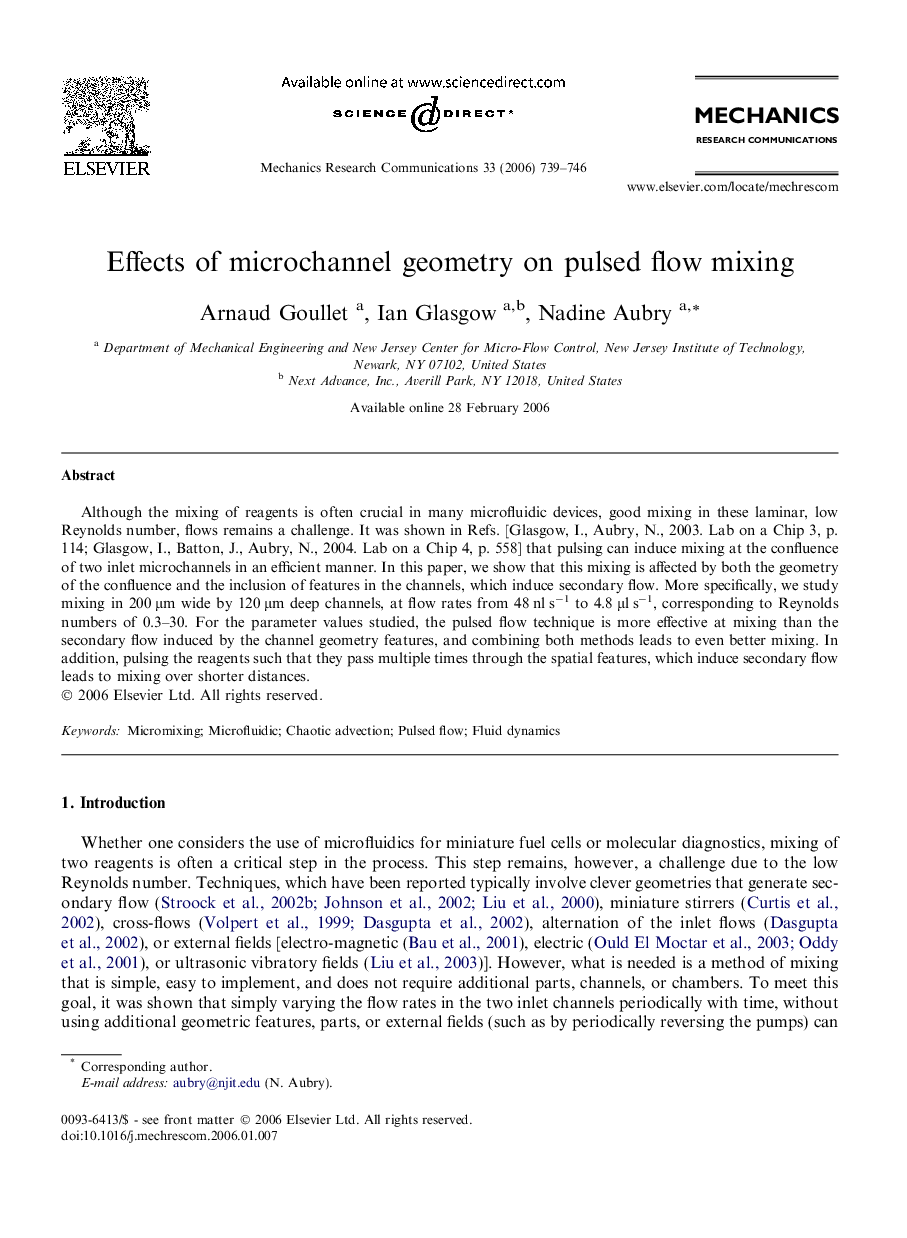| Article ID | Journal | Published Year | Pages | File Type |
|---|---|---|---|---|
| 801071 | Mechanics Research Communications | 2006 | 8 Pages |
Although the mixing of reagents is often crucial in many microfluidic devices, good mixing in these laminar, low Reynolds number, flows remains a challenge. It was shown in Refs. [Glasgow, I., Aubry, N., 2003. Lab on a Chip 3, p. 114; Glasgow, I., Batton, J., Aubry, N., 2004. Lab on a Chip 4, p. 558] that pulsing can induce mixing at the confluence of two inlet microchannels in an efficient manner. In this paper, we show that this mixing is affected by both the geometry of the confluence and the inclusion of features in the channels, which induce secondary flow. More specifically, we study mixing in 200 μm wide by 120 μm deep channels, at flow rates from 48 nl s−1 to 4.8 μl s−1, corresponding to Reynolds numbers of 0.3–30. For the parameter values studied, the pulsed flow technique is more effective at mixing than the secondary flow induced by the channel geometry features, and combining both methods leads to even better mixing. In addition, pulsing the reagents such that they pass multiple times through the spatial features, which induce secondary flow leads to mixing over shorter distances.
